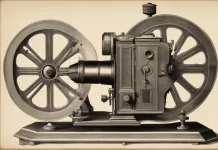The evolution of fans spans from simple hand-held devices to complex, efficient machines that cool homes, industries, and even entire cities. Here’s a step-by-step look at fan innovation from the first mechanical fans to modern smart fans. Fan Innovation Step by Step 1st to Latest
1. Early Handheld and Manually Operated Fans (Ancient Times)
Fans were originally hand-operated, and evidence of handheld fans dates back to ancient civilizations like Egypt, China, and India. These fans were often woven from materials like palm leaves or bamboo and symbolized wealth and status. In Asian cultures, fans evolved into intricate designs, some even incorporating silk and feathers.
2. The First Mechanical Fan (Early 1800s)
The 19th century brought the first mechanically powered fans. In 1830, a ventilating device powered by a hand crank was used in mine shafts. Soon after, mechanical fans began appearing in factories to help cool workers and disperse toxic fumes. These initial mechanical fans relied on steam or water to turn the blades.

3. Electric Fans Introduced (1880s)
The invention of electric fans in the 1880s marked a significant milestone. In 1882, Schuyler Skaats Wheeler created a two-bladed electric fan that could be powered by direct current (DC) electricity. It was a desktop fan mainly used in offices. Around this time, companies like General Electric and Westinghouse began manufacturing and selling electric fans to the public, turning fans from industrial tools into household appliances.
4. Oscillating Fans (1900s)
In the early 1900s, engineers added an oscillation feature to electric fans, allowing them to cool larger areas by rotating from side to side. In 1904, the first oscillating fan was introduced by the American fan company Jandus. This innovation quickly gained popularity, as it provided more effective cooling than stationary fans.
5. Metal Blades and Cage Design (1920s)
As fan popularity grew, safety and durability became primary concerns. Companies introduced metal blades and protective cages, reducing injuries and enhancing the durability of fans. These models were typically heavy and noisy, but they became a staple in households and workplaces.
6. Plastic Fans and Compact Designs (1950s-1960s)
The 1950s and 60s saw significant changes in fan materials and designs, particularly with the introduction of plastic. Plastic fans were lighter, safer, and cheaper to produce than metal fans. The shift to plastic also allowed manufacturers to experiment with color and design, making fans more stylish and accessible to a wider audience.
7. Ceiling Fans and Energy Efficiency (1970s)
Ceiling fans experienced a resurgence in the 1970s amid rising energy costs. These fans offered a cost-effective way to cool rooms, as they use less energy than air conditioning. Hunter, a major fan company, marketed energy-efficient ceiling fans designed to circulate air and reduce energy consumption. Ceiling fans became standard fixtures in homes and offices as people sought energy-saving options for climate control.
8. Portable and Window Fans (1980s)
As home layouts and air conditioning became more prevalent, portable fans became popular for targeted cooling. Box fans and window fans emerged as simple, affordable options to increase airflow and improve ventilation. They provided versatility, allowing users to place them in specific rooms or window spaces.
9. Introduction of Air Purification and Tower Fans (1990s)
In the 1990s, manufacturers combined fans with air-purification technology, adding HEPA filters to trap dust, pollen, and allergens. Tower fans, which are slim and vertically oriented, became popular for their space-saving design. These fans oscillate and offer a sleek appearance suitable for modern homes, blending cooling with air purification.
10. Dyson’s Bladeless Fan (2009)
Dyson revolutionized the fan industry in 2009 with the introduction of the Dyson Air Multiplier, a bladeless fan that produces an uninterrupted airflow. It works by drawing in air through the base and amplifying it, resulting in a smoother and safer cooling experience. The bladeless design not only improved safety but also allowed for easier cleaning and a unique, futuristic aesthetic.
11. Smart Fans and IoT Integration (2010s)
As smart home technology became popular in the 2010s, fan manufacturers began incorporating smart features like Wi-Fi, voice control, and app integration. Companies like Haiku Home introduced fans with motion sensors, climate monitoring, and compatibility with smart home ecosystems like Amazon Alexa and Google Assistant. These fans can adjust speed and oscillation automatically based on room temperature, humidity, and user preferences.
12. Energy-Efficient and DC Motor Fans (2010s-Present)
Energy efficiency became a major focus, and DC (direct current) motors emerged as a more efficient alternative to traditional AC (alternating current) motors. DC fans consume less electricity, are quieter, and provide a range of speed options. This trend aligns with growing environmental consciousness and rising energy costs, making DC motor fans an attractive option for both residential and commercial spaces.
13. Ceiling Fans with Reversible Blades and Lighting Integration (2020s)
Today, ceiling fans are available with reversible blades, allowing users to switch between clockwise and counterclockwise rotation to circulate warm air in winter and cool air in summer. Fans with integrated LED lighting offer multi-functionality, combining lighting with climate control. This feature is especially popular in compact spaces and homes seeking energy-efficient, multifunctional devices.
14. Solar-Powered and Eco-Friendly Fans (Present)
Environmental sustainability has prompted the development of solar-powered fans, which are ideal for outdoor use and homes aiming to reduce their carbon footprint. Companies have begun using recyclable materials in fan construction, catering to consumers interested in eco-friendly options. Solar fans are especially popular in off-grid homes, outdoor settings, and areas with abundant sunlight.
15. The Future: AI-Controlled Fans and Climate-Adaptive Technology
Looking ahead, AI-powered fans may become standard, with features that adjust airflow, speed, and oscillation based on real-time data on room occupancy, temperature, and weather conditions. Fans with built-in climate sensors and machine learning capabilities could potentially integrate with broader smart home systems, optimizing indoor climate by working in tandem with air conditioning or heating units.
Conclusion
The journey of fan technology reflects advancements in engineering, design, and sustainability. From hand-operated fans to smart, eco-friendly appliances, fans have transformed from simple tools for cooling to essential elements in creating comfortable, connected, and climate-conscious environments. As technology continues to evolve, the fan industry will likely continue to innovate, focusing on energy efficiency, environmental responsibility, and enhanced user experience.






